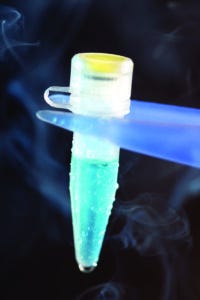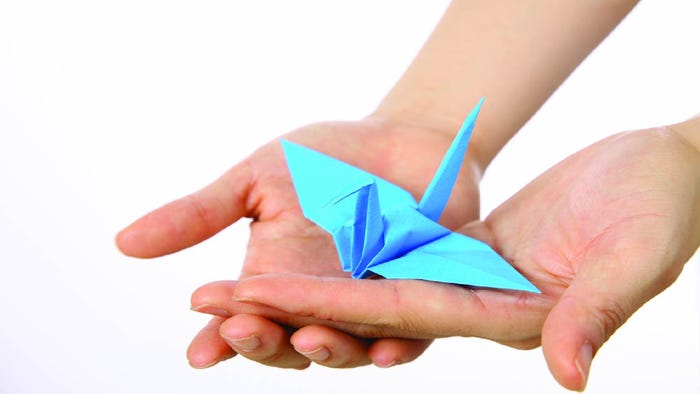Cryopreserving Hematopoietic Stem Cells — Part 2: Methods, Materials, and OperationsCryopreserving Hematopoietic Stem Cells — Part 2: Methods, Materials, and Operations

Bone marrow (BM) remains a critical source of hematopoietic progenitors used in stem-cell transplantation. Currently, however, it is obtained almost exclusively from living donors. That approach limits what quantities of cells can be extracted during an aspiration procedure, in turn reducing the number of opportunities available for treating blood-cancer patients.
In BPI’s November 2022 eBook on cryopreservation, I presented part of my conversation with Erik Woods (cofounder, chief science officer, and executive vice president of Ossium Health) about ways to improve BM-collection workflows (6). Woods’s company is reviving a technique from the early days of BM extraction to expand access to stem-cell transplantation: collecting marrow from recently deceased donors who have enrolled in organ-donation programs. That method holds promise not only for gathering more material per process than what can be obtained during live-donor aspiration, but also for enabling process industrialization and scale-up.
Because Ossium Health works with material from deceased patients, cryopreservation plays a critical role in the company’s manufacturing process. The first part of my discussion with Woods explored how Ossium performs BM extraction, what kinds of cells must be isolated and preserved, and how their properties influence cryopreservation protocols. This second installment focuses on materials and methods that can be leveraged to help optimize cellular freezing and thawing. Herein, Woods also highlights key considerations for operations, including problems that can arise during frozen storage of cryopreserved cells and difficulties for clinicians who need to prepare materials for administration to patients.
Protecting Cells During Freezing
What obstacles might cells face during cryopreservation? Cryopreservation is a process with multiple stages that can cause cell injury. The difficulties start with addition of cryoprotectants. Depending on cell type, few cells can survive (and remain viable) without cryoprotection. It would be incorrect to say that cells never survive the process, and strategies are available for capitalizing on freezing itself to help cells survive on ice. But generally, some cryoprotection is needed.
Cryoprotectants fall into two broad categories: permeable and nonpermeable protectants. Nonpermeable cryoprotectants work mainly by inducing cell dehydration. As cells shed water and shrink, they have less water available for ice formation. Some nonpermeable solutions also help to stabilize ice in extracellular solution and even bridge extracellular proteins for added protection. Such materials provide passive intracellular protection; they do not enter into cells to do their work.
Permeable cryoprotectants get into cells. These materials exert their effects not by chemical properties per se, but by “colligative” properties, suppressing the cellular freezing point by diluting solutes that build up during ice formation. That feature helps to mitigate injury from solute effects. Permeable cryoprotectants also interact with water to some extent.
Cell systems usually can be processed with a permeable or nonpermeable cryoprotectant. For some cell systems, it is a good idea to use both types, as is common with cord-blood applications (7). For instance, you can combine dimethyl sulfoxide (DMSO) with a carbohydrate such as hydroxyethyl starch.
Ice-recrystallization inhibitors (IRIs) are a new and promising category of cryoprotectant (8). Depending on the type, IRIs can be cell permeable or nonpermeable, but they interfere with the structure of ice. Miniscule amounts of intracellular ice form during slow cooling. Cells generally can tolerate that. But if frozen cells warm too much above subzero temperatures, those tiny ice formations gather to form larger ones, and that can damage cells. IRI proteins are designed to disrupt that process.
After addition of cryoprotectant, the next set of complications comes during cooling below ambient temperatures. Changes happen to cells well before they reach subzero temperatures. The molecular pumps that maintain homeostasis of the intracellular space slow down and stop working because they have incrementally less energy to use. Remember, too, that intracellular environments differ from the extracellular solution. Cells used for therapeutic applications typically are bathed in ~0.9% saline (and a few other components). The intracellular space has different properties that can create problems at hypothermic states as membrane pumps shut off and homeostasis can no longer be maintained.
What happens next is a direct result of the cooling rate. If a solution cools too slowly, then ice gradually builds up in the extracellular solution. That ice can be considered as a precipitate of pure water. As the extracellular solution concentrates, water leaves the cell osmotically to try to balance that out. The cell shrinks, the solution becomes even more concentrated, and eventually, everything is locked up. If a solution freezes too quickly, then ice forms rapidly, giving cells insufficient time to respond osmotically and permit water to cross outward. Consequently, cells have considerable amounts of water available to form ice, and intracellular ice formation is likely to be rampant. Somewhere between those two extremes is the optimal cooling rate.
Problems also can arise during warming. The rule of thumb is to warm cryopreserved cells as rapidly as possible. Depending on what cooling approach was applied, you might have more flexibility in how to warm your products. Slow cooling rates generally require fast warming rates. The main consideration, though, is to outrace ice recrystalization. IRIs provide a buffer against that problem.
What parameters need to be monitored most closely at the stages that you highlighted? One way to identify critical parameters is to use a “fundamental” cryobiology approach, which is effective but requires considerable time, training, and specialized equipment. Another possibility is an empirical approach. The method that I described earlier follows the fundamental approach. You measure parameters first — e.g., hydraulic conductivity, cryoprotectant permeability, and osmotic tolerance — to determine how much cells can shrink and swell before they reach too damaged a state to be viable.
If you don’t have time or resources for such work, you can set up empirical experiments to test parameters based on available information. For cells that are “chill sensitive,” create studies to account for that. If you have an established set of cryoprotectants to use, then you should design experiments to observe addition and removal of cryoprotectants without freezing to ensure that the osmotic consequences will not cause problems during freeze–thaw. Such experiments can be performed relatively quickly.
You also should consider how stable cells are in different cryoprotectants because that factor influences how much time you have (if needed) to remove cryoprotectant from a thawed solution. Testing cryoprotectant addition and dilution up front is a good idea because you don’t always know whether you need to separate those variables. If you run a whole process and consider only the end results, it will be difficult to uncouple all of those variables.
For years, Locksely McGann’s group has designed experiments based on graded freezing (9). First, you perform the step that you want to perform (e.g., cryopreservative addition). Then you cool down the sample cells to a set temperature — maybe even a temperature above 0 °C — and bring them back to ambient temperature to check their viability. That approach is useful for chill-sensitive cells, which undergo membrane or internal-structure phase transitions at temperatures above 0 °C. Platelets do that, for example, activating at ~10 °C. Veterans of the agriculture industry know that boar sperm is exquisitely chill-sensitive. It gets damaged even by temperatures above zero. So chill sensitivity might be a factor to consider “out of the gate.” Then, you can cool cells to a set temperature and warm them to 10, 20, 40, and even 80 °C to see what happens to them.
Such studies can help cryobiologists to uncover empirically how and why cell damage occurs during a process, enabling them to establish a cooling rate. You at least can infer, for instance, whether cell damage comes from cryopreservative side effects, ice-crystal formation, or rapid cooling. If you have performed early experiments to optimize your cryopreservative-dilution properties, results from those studies can be used to ensure that cryopreservative removal is not causing problems in more complete processes (keeping warming rates
in mind).
Such parameters should be measured, especially during cryoprocess development. It is difficult to watch cells shrink and swell in real time; often, such events can only be observed indirectly. But cooling and warming temperatures certainly can be monitored.
Designing Protocols
What operational concerns arise during freezing and thawing? What bearing do such factors have on cryoprocess design? When creating Ossium’s process, we kept operators in mind, assuming that end users might not know much about cryobiology and that they might have difficulty with following complicated instructions. So we developed a robust and forgiving cryopreservation process — e.g., by specifying application of infusible cryoprotectants to eliminate cell-washing steps and by building systems that operate over a broad range of warming rates.
As I mentioned, cryopreserved cells need to be warmed quickly, but limitations exist, especially when accounting for differences between bags and vials. Because vials hold much smaller volumes of material, their warming rates must be slowed down to match those of associated cryobags. Typically, technicians will thaw bags in a water bath — which, on the face of it, is not ideal because of cleanliness concerns. But in a 37 °C water bath, a cryobag might need about four minutes to reach the point at which a little bit of ice remains. At that temperature, a 1-mL vial might thaw in about a minute. You might need to warm a vial in a ~20 °C solution to match the thawing rate of its associated bags. You could set a bath to 40–42 °C to warm bags faster, but if you overshoot your targets, other problems will arise.
Clearly, you do not want to provide such directions to end users. Cryopreservation processes must be developed with both cells and operators in mind. Some cryoprotectants require removal before a cellular product can be administered to a patient. Using that kind of material will influence how operators do their work. And we’ve been talking mainly about slow-cooling processes, but some cells require vitrification, which is not freezing, but rather formation of a metastable glass with no ice present. That format involves high-molar concentrations of cryoprotectants, so it requires a different process — and a different conversation about how to perform it.
Do cryostorage conditions need similarly rigorous evaluation? Company scientists and operators frequently overlook what happens when cells are in frozen storage. Transient warming events are damaging to cells. Many groups cite the glass-transition temperature of water (about –130 °C) as the highest possible temperature for frozen storage of cells. But cells are not cryopreserved in water; they are formulated with materials bearing colligative properties that depress cellular freezing (and melting) points, so temperatures of –100 °C to –120 °C are more worrisome. But you would be surprised how quickly samples can warm from
–196 °C to –140 °C or even –100 °C.
Reaching such temperatures is not necessarily bad, but it puts cells at risk. Consider a tank with six racks, each of which can hold 100 vials (600 total). Every time that a technician pulls out a rack to grab a vial, all of the other vials will experience a transforming event. By the time that the technician has retrieved the requisite materials and replaced the rack, the remaining containers might have gone through many transient warming events, hundreds potentially. Our calculations indicate that vials can warm past the glass-transition temperature in under a minute.
Operators must take great care during transfers. We perform such operations in three-person teams. One person documents everything that occurs during the process, another person executes the transfer, and a third operator keeps time to ensure that they are staying within specifications. Such operations require good training. Several groups are developing automated systems to help pull samples while keeping the rest cold. Obviously, technicians might not have access to advanced tools and thus need to use standard equipment. So warming events often need to be prevented through monitoring.
If you have worked as an applied cryobiologist for any period — I am approaching the 30-year mark, myself — you will have learned two important lessons. The first lesson, as my mentor showed me, is that cryobiologists “freeze their mistakes.” The sentiment is akin to “garbage in, garbage out.” What goes into a cryopreservation system must be as healthy as possible.
If your team is developing a cell therapy, then you must be an expert on that product. You should know what it means for your cells to be “happy” so that they will perform their intended functions. Often, using robust, healthy cells can overcome minor cryopreservation and thawing problems. Thus, it is important to use the most relevant functional assay to develop your cryopreservation process. Many teams have tripped up because they measured only cell viability. Such testing provides a high-level picture of what cells are experiencing; it does not give details.
The second lesson is that problems happen. If you maintain cells in a cryogenic state for 20 years, chances are good that something strange will happen — a tank failure, a computer-system failure, or something else. We all have heard the horror story from the “old days” about a temperature monitor that looked operational but consistently listed the same value. Not recognizing the problem, technicians recorded the same temperature again and again. Clearly, that number should never be the same; a tank’s temperature changes continually, even if the changes are miniscule. But nobody realized that the monitor had frozen at that value. By the time that those operators realized the problem, they had lost some of their samples.
I remember a similar situation from when I ran an anonymous-donor sperm bank. At the time, we needed to measure the liquid-nitrogen volume of fill tanks with a yardstick. That method works just fine, but in one case, an operator placed the yardstick against the side of the tank, which allowed the frost line to reach higher than the actual level of the nitrogen. We ultimately lost some inventory because we did not discover the problem in time.
Such problems largely have been surmounted by development and commercial availability of excellent temperature-monitoring systems. Ossium’s bank, for instance, uses 21 CFR Part 11–compliant systems that track temperature accurately and consistently. Clearly, companies also can use mitigation strategies. Everybody understands why forklifts are not permitted in a cryobank area, for instance. But what about a stray gunshot, a meteorite, or a broken weld? Over long periods of time, problems can and do happen.
If the seals on a cryotank fail, and the nitrogen dissipates, then those units must be moved into backup tanks before their contents warm. That is why we decided against using the largest storage tanks available. They store materials more efficiently than smaller tanks do, but if a large tank fails, your units will have warmed up too much by the time that you’ve finished transferring them to another storage container. We use the second-largest size available, which is big enough to carry materials efficiently, but small enough to allow for emergency transfer.
For backup tanks, I recommend “old-school” systems used in the agricultural industry to cryopreserve bull semen and similar materials. Such tanks have large tops that open completely. I also recommend filling backup tanks with liquid nitrogen. Even if you usually store cells in nitrogen vapor, they will be warming up when a failure occurs, and you need some way to preserve samples quickly. Keeping samples in liquid nitrogen would buy you time to transfer bags and vials into a more permanent storage solution.
Suppliers of automation technologies might need to consider ways to address potential failures. Cryopreserved cells might be in trouble if an automated system won’t let its user override it to open the tank during an emergency. Such problems usually are not considered until they happen.
The Future of Cellular Cryopreservation
Controlling cryoprocess variability seems to be an important topic among drug developers and equipment vendors alike. Do you get that sense? Many scientists are focusing on process reproducibility now, which is a good development. Cell therapies have driven much of that work. Scientists understand that the industry needs to fix variability problems to bring cell therapies into mainstream medicine, but those problems have yet to be solved.
One key consideration is equipment standardization. Having standard unit sizes and racking designs would help to ensure that users do not need to rebuild their entire process because they changed volume size or vial configurations. You don’t want to receive a unit from an adjacent group and then find when putting the material in your tank that the cassette doesn’t fit in your rack. Those kinds of concerns seem easy to fix, but we have not been able to get many suppliers on board with standardization.
What else does the cell-therapy industry need most right now to optimize freeze–thaw processes? In some cases, it is important to control passive induction of extracellular ice. Supercooling almost always occurs to some extent during slow cooling. The faster the rate, the more likely that supercooling will happen. Cooling material at –1 °C/min might result in minimal supercooling. But for some cell types, that rate might generate considerable supercooling. Then when the solution freezes, ice will form rapidly. Remember that ice is energetically favorable; it releases energy as heat. That is why freezing events always create some heat. In the worst case, excessive supercooling results in flash-freezing, and the generated ice creates enough heat to thaw some of the solution. Such an event can disrupt a process completely. In such situations, it can be critical to induce extracellular ice.
Embryos provide a good example here. Before it became standard practice to vitrify them, they were slow-cooled. The controlled-rate freezers (CRFs) used to freeze embryos were loaded in “straws” that could be pulled out and inspected. To prevent excessive supercooling, samples were removed from their straws and touched with a precooled instrument to form a little bit of ice in the extracellular space. That would help the ice to propagate in strategic ways.
Other ice-induction methods are available. For instance, scientists have tried to develop chemical templates on which ice can form — e.g., ceramic beads. And many CRFs now are designed with protocols for spiking down samples to force ice formation. That is true especially for freezers built for large-volume processes. But sometimes such protocols are more deleterious than helpful because they introduce risks for variability. My experience is that different CRFs, even of the same brand and model, execute ice induction slightly differently. I try to avoid that problem if possible.
The passing of James Lovelock in July 2022 also has resurrected conversations about DMSO. He was famous for many reasons, but many obituaries about him neglected that he was among the first modern cryobiologists. He also predicted and determined that DMSO would work as a cryoprotectant.
I believe — and there is considerable literature to support the idea — that DMSO remains the best cryoprotectant available (e.g., 10–12). I don’t know of any substance other than water that permeates cells faster than DMSO, and it works well from the cell’s “perspective.” But it is hard on a patient’s body. Depending on the volume that is administered, patients receiving it might experience unpleasant taste and smell, headaches, nausea, anaphylactic reactions, and even neurologic events.
The industry needs to advance to the next stage. We need some substance that works as well as DMSO but is more injectable and tolerable for patients. Much of the research into alternatives seems to focus too much on nonpermeable cryoprotectants (the “ice side” of the equation) and not enough on permeable solutions that can do what DMSO does. But advances are coming.
Cryoprocess reproducibility remains an industry priority. Currently, cooling-rate profiles from freeze–thaw runs draw the most attention. We need to remember what that information represents, though. Rather than relying on one data set, we need to gather all of the information possible and consider it all together. I know groups that have failed a run because the cooling profile did not seem to be right, but they did not consider whether temperature probes came off of cryobags and whether materials were touching metal. Moreover, probes represent indirect measurements because they are attached to bags, not placed inside them. Those measurements absolutely should be taken, but we need to understand them for what they are: just glimpses into a process.
The industry could benefit from greater implementation of automated solutions for handling cryopreserved units. Samples can’t sit in a bank forever; they need to be moved sometime. Much work has gone into facilitating temperature monitoring and unit tracking, but uptake has been slow, usually because of costs.
I hope that drug developers and equipment suppliers will work closely with hospitals and clinical centers to establish best practices for freeze–thaw processes. Drug products are manufactured according to good manufacturing practice (GMP), but technicians and clinicians might use water baths — which definitely are not GMP methods — to thaw cells. Some commercially available systems enable thawing without contacting water; clinicians just need to monitor a bag (or associated vial) to ensure that it is thawing at the correct rate. Such devices can record starting temperatures, measure thawing rates, and track parameters in cloud-based software. But those devices are expensive. When I have advocated for their application with our product, hospitals say, “That technology is great. Will you buy it for us?” We can’t buy every hospital one of those devices. I’m not entirely sure how to address that access problem.
I hadn’t considered those limitations. How pervasive are they? The industry needs to develop ways to unburden end users from complex protocols. Right now, we have a theory–practice gap in cryobiology. Scientists might come up with an innovative method for freezing cells and tissues, but then they might realize that it is impossible to implement clinically. This is one benefit to have come from application of DMSO: It can be used across many cell and tissue types, facilitating workflows. If cryobiologists move away from DMSO toward different kinds of cryopreservatives, then cryopreservation of cell therapies might become more product- and process-specific than it is now. You might be able to develop a system that works for a given situation, but your cryoprotectant might not translate well to processes using other cell types.
That possibility brings us back to the importance of functional assays. Measure as many parameters as you can early in cryoprocess development. Doing such testing up front will help you to gear your system toward protecting what cellular properties you need to preserve.
References
For references 1–5, see Part 1 of this article, published in BPI’s November 2022 eBook.
6 Gazaille B, Woods E. Cryopreservation: Special Considerations for Cell Therapy. BioProcess Int. eBook, November 2022; https://bioprocessintl.com/manufacturing/cryopreservation/ebook-cryopreservation-special-considerations-for-cell-therapies.
7 Meneghel J, Kilbride P, Morris GJ. Cryopreservation as a Key Element in the Successful Delivery of Cell-Based Therapies — A Review. Front. Med. 7, 2020: 592242; https://doi.org/10.3389/fmed.2020.592242.
8 Murray KA, Gibson MI. Chemical Approaches to Cryopreservation. Nature Rev. Chem. 6, 2022: 579–593; https://doi.org/10.1038/s41570-022-00407-4.
9 Ross-Rodriguez LU, Elliott JAW, McGann LE. Investigating Cryoinjury Using Simulations and Experiments: 2. TF-1 Cells During Graded Freezing (Interrupted Slow Cooling Without Hold Time). Cryobiology 61(1) 2010: 46–51; https://doi.org/10.1016/j.cryobiol.201004.005.
Brian Gazaille is managing editor for BioProcess International, part of Informa Connect; 1-212-600-3594; [email protected]. Erik Woods is cofounder, chief science officer, and executive vice president of Ossium Health, 5742 West 74th Street, Indianapolis, IN 46278; https://www.ossiumhealth.com.
You May Also Like




.jpg?width=700&auto=webp&quality=80&disable=upscale)

